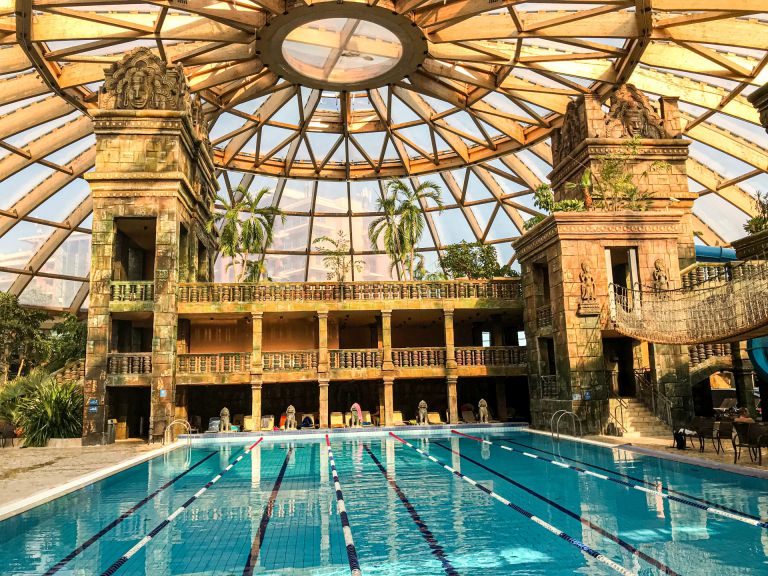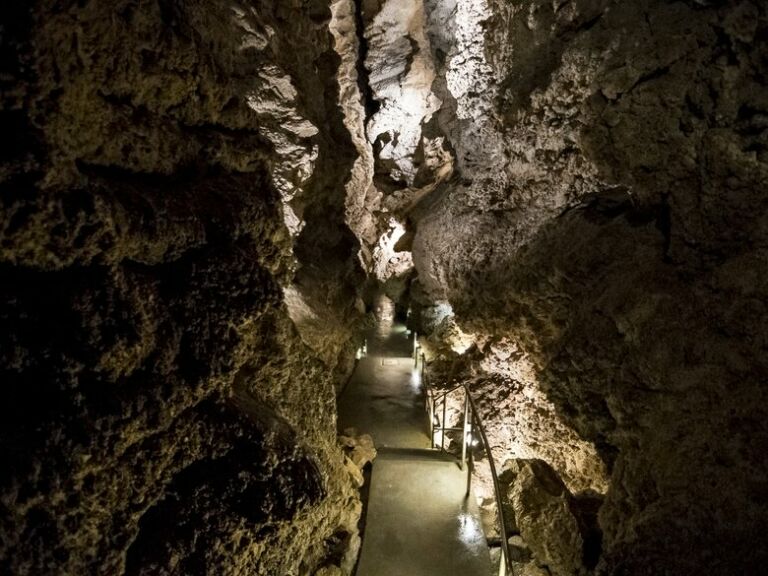Step into history: most iconic historic hotels in Budapest, Hungary
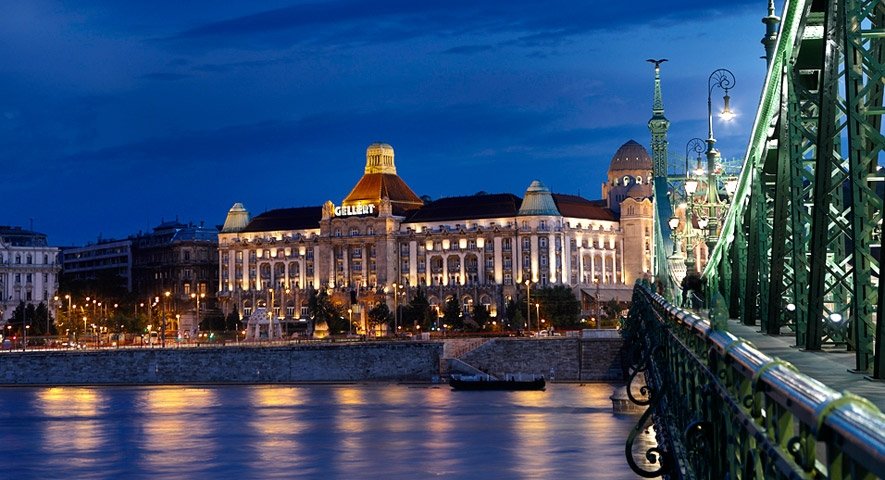
Step into history: most iconic historic hotels in Budapest, Hungary
Discover Budapest’s most historic hotels—where luxury meets legacy. Stay where emperors, artists, and revolutionaries once walked.
More than just places to sleep, these grand hotels of Budapest are windows into empires, revolutions, and elegance from another era.
Budapest, capital of Hungary, is often praised for its architecture, its thermal baths, and its cultural richness—but what if you could sleep inside the history itself? The city’s most iconic hotels offer more than luxurious amenities; they are palaces that once hosted emperors, artists, war rooms, and secret meetings. They’re not just hotels. They’re stories you can check into.
In this article, we’ll take you through some of the most historically significant hotels in Budapest—some still operating, some undergoing rebirth—each offering a unique perspective on the city’s vibrant past.
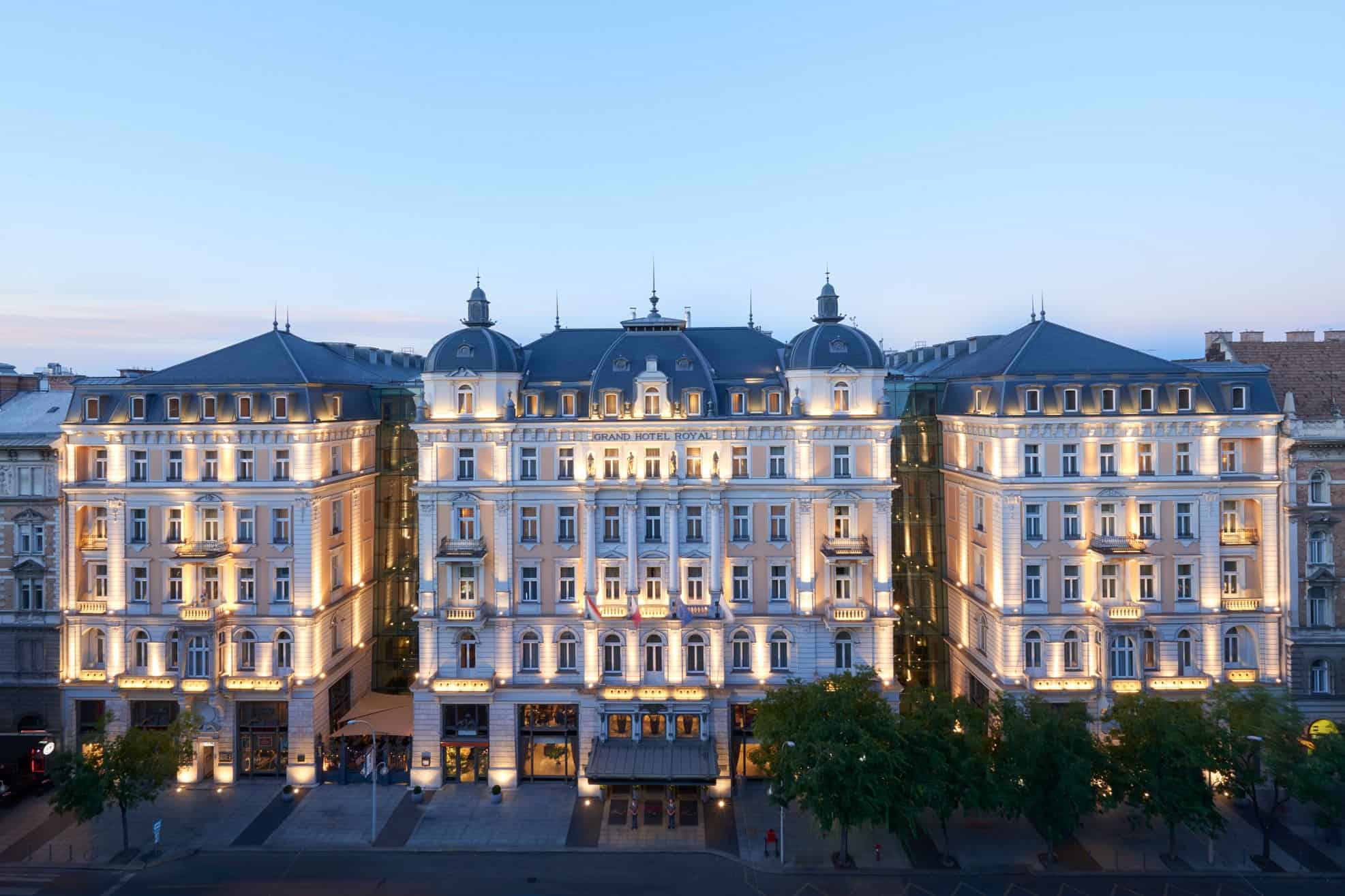
Corinthia Hotel Budapest
Opened: 1896 | Formerly: Grand Hotel Royal
A cinematic and political landmark
Opened in the same year as Hungary’s Millennium celebrations, the Corinthia Budapest (then the Grand Hotel Royal) was a symbol of innovation and opulence. One of its claims to fame? It hosted Hungary’s first-ever cinema screening by the Lumière brothers—ushering in the Hungarian film industry.
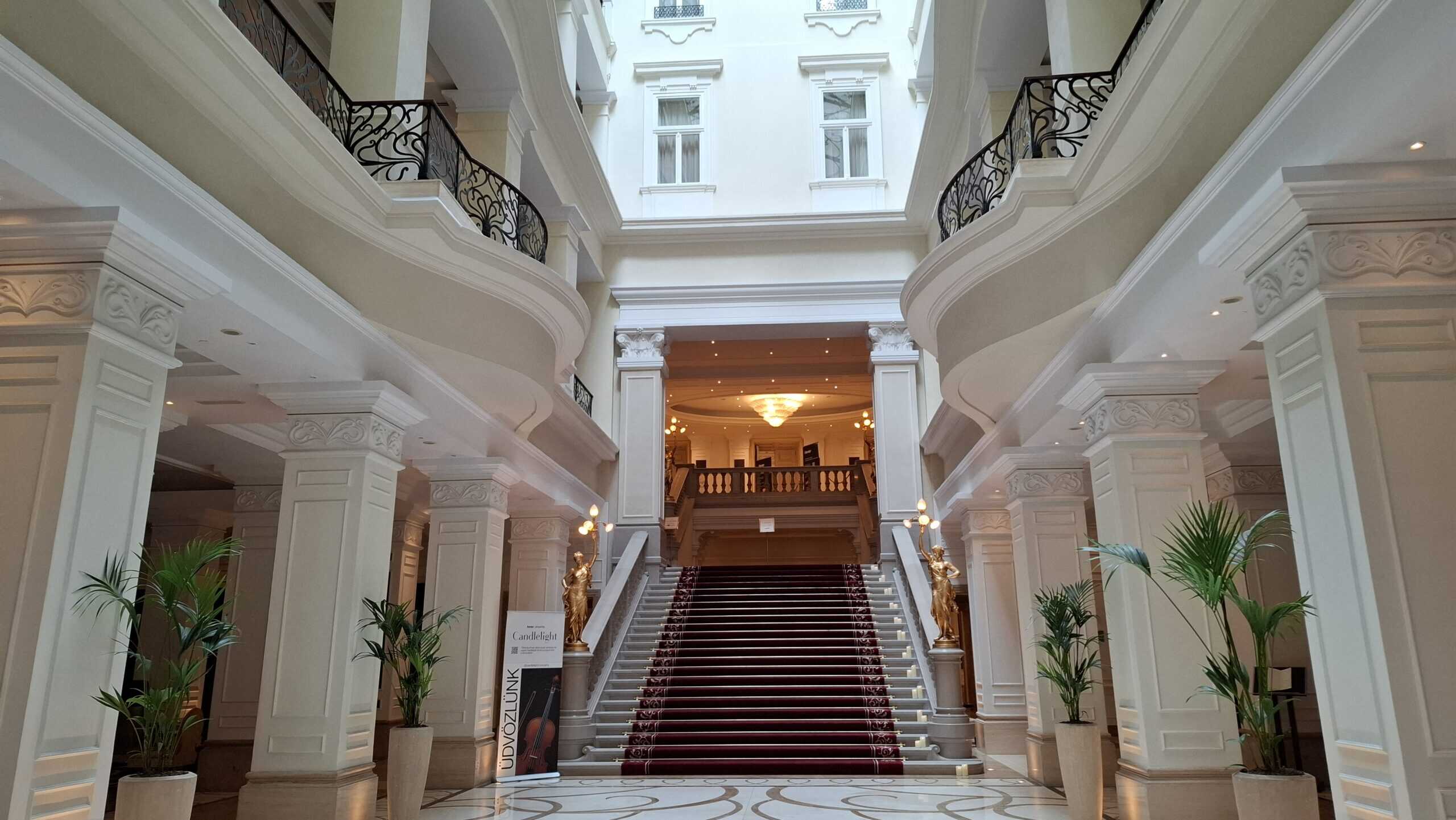
Its design was so striking that it inspired Wes Anderson’s The Grand Budapest Hotel. Through the decades, it’s witnessed world wars, fire, and national upheaval, yet it continues to radiate Austro-Hungarian grandeur today.
Modern Experience: Fully restored and luxurious, Corinthia offers a full spa, Michelin-quality dining, and a lobby that feels like stepping into an imperial ballroom.
Traveler Tip: Even if you’re not staying here, enjoy a drink in the glass-domed lobby bar and imagine the society balls of the 19th century.
✅ Currently open and operating.
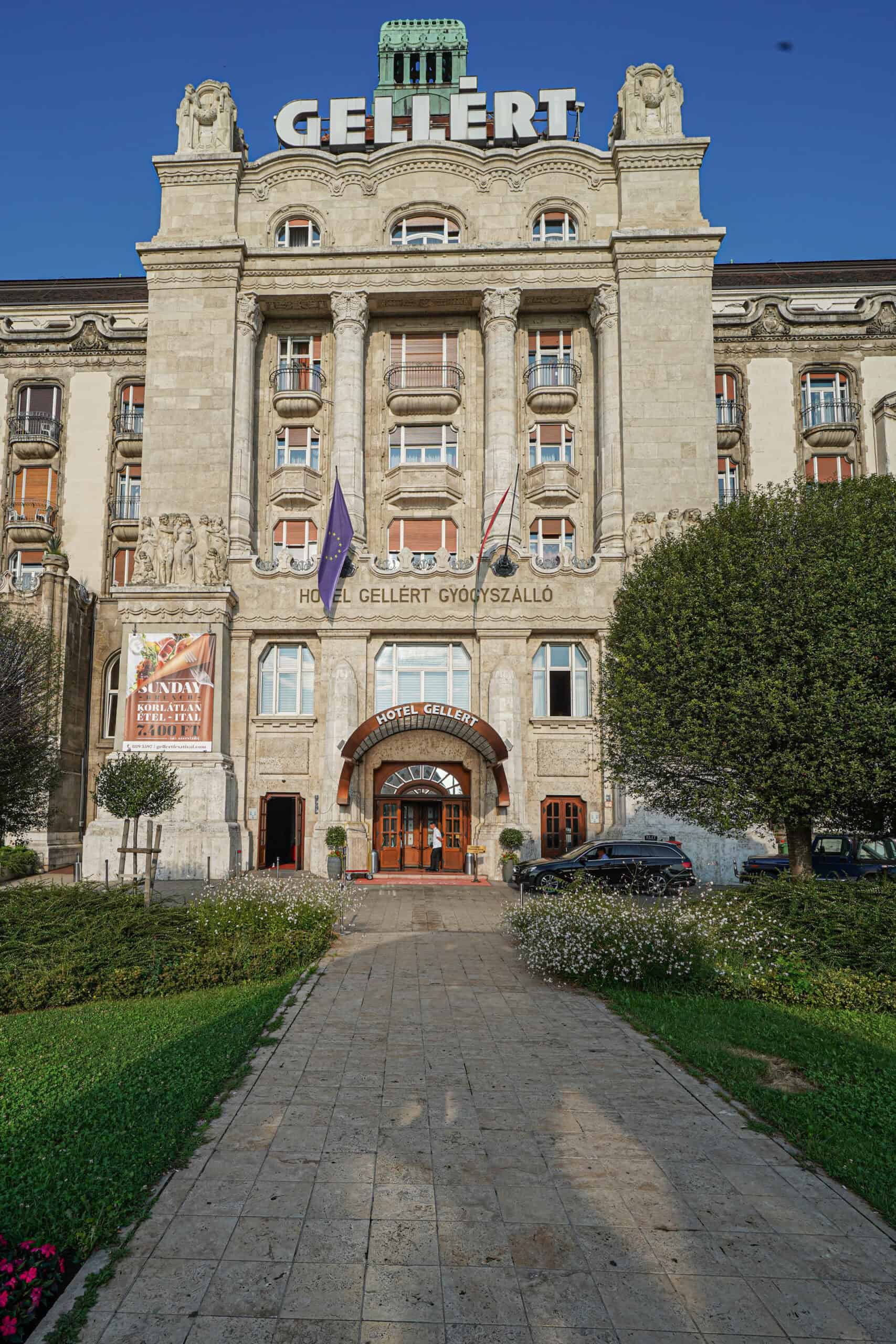
Hotel Gellért & Gellért Baths
Opened: 1918 | Currently: Under full renovation (hotel closed, baths open)
A spa palace steeped in legends
Perched at the foot of Gellért Hill and overlooking the Danube in Buda side of the city, Hotel Gellért is one of Budapest’s most iconic buildings. Opened just after WWI, it hosted everyone from Otto von Habsburg to Richard Nixon. But its true fame lies in the Gellért Baths, an Art Nouveau masterpiece still operating today.
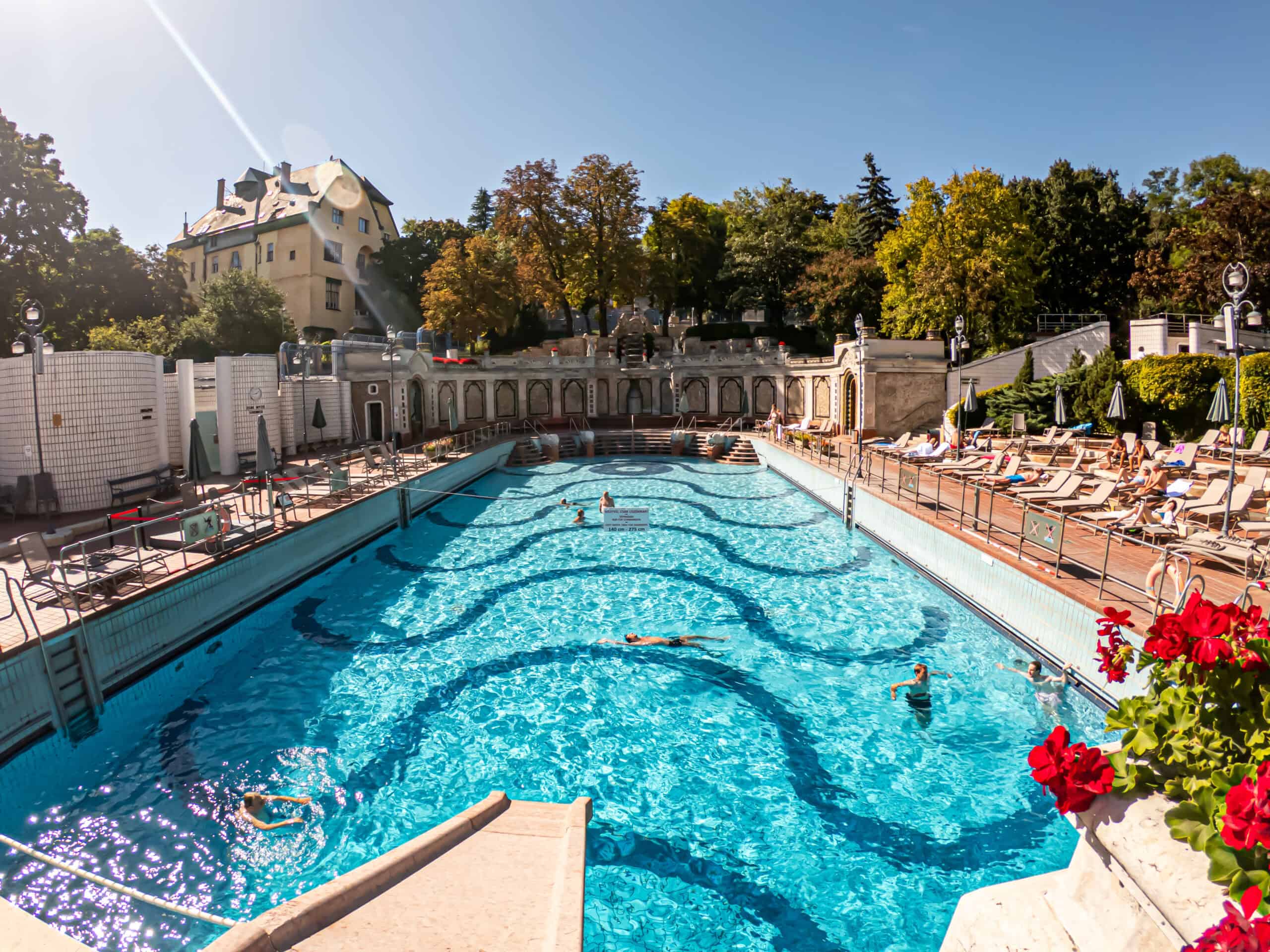
The historic hotel itself closed in 2021 for a major renovation and is expected to reopen under the Mandarin Oriental brand by 2027.
Modern Experience: The hotel is under construction, but the bathhouse is still one of the most beautiful thermal experiences in Europe—think mosaic floors, stained glass, and pools under soaring ceilings.
Traveler Tip: Walk across Liberty Bridge at sunset for the best photo angle of the building’s façade.
⚠️ Hotel closed until ~2027. Thermal bath still open but will close from autumn 2025.
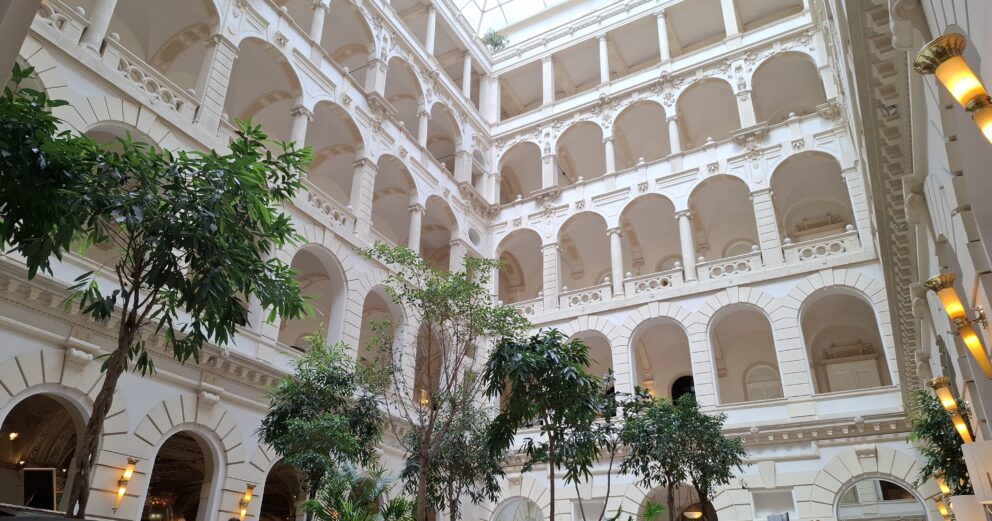
Anantara New York Palace Budapest & Café
Opened: 1894 | Part of the Anantara brand
Where literature met luxury
Arguably the most beautiful café in the world, the New York Café has been a magnet for Hungary’s literary elite since the late 19th century. Writers like Géza Gárdonyi, Gyula Krúdy, and Frigyes Karinthy made this their creative home.
The luxury historic hotel above the café—today part of the Anantara brand—offers old-world elegance with modern luxury. Think marble staircases, gold-leaf ceilings, and chandeliers the size of small cars.
Modern experience: A deluxe stay in one of the city’s most opulent buildings, with the added bonus of sipping cappuccino in the café where poets once debated politics and prose.
Traveler tip: Get there early or reserve a table for coffee and cake—queues form quickly. You don’t need to be a guest to enjoy the café.
Pair your stay with a private airport transfer to match the hotel’s level of comfort and service.
✅ Open and thriving. Café open to the public.
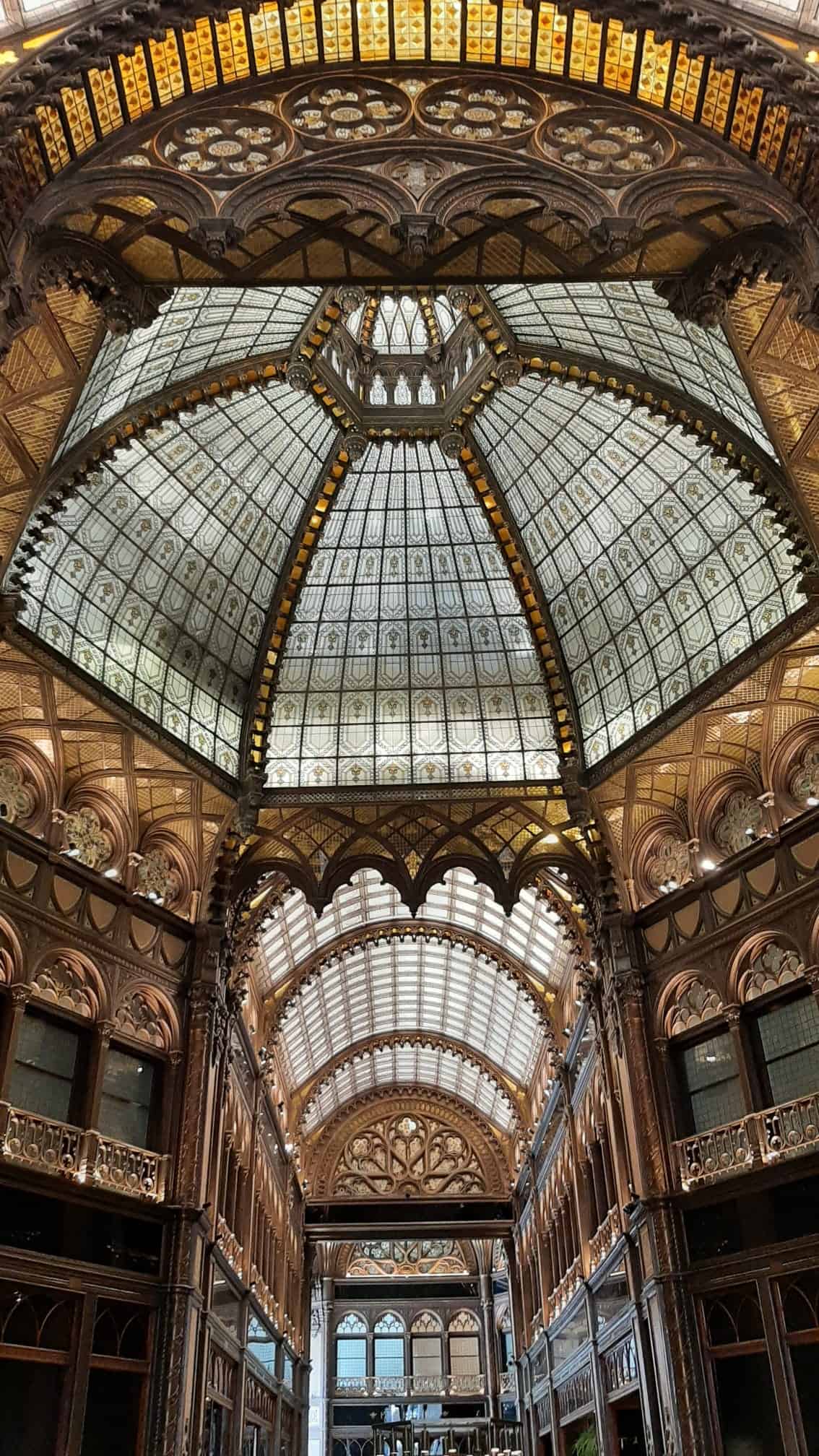
Párisi Udvar Hotel Budapest
Originally built: 1817 | Rebuilt: 1909–1913 | Restored: 2019
A marketplace of monarchs reborn
Modeled after Paris’s famous covered arcades, the Párisi Udvar was once the most luxurious shopping passage in city center of Budapest. With its Moorish, Gothic, and Art Nouveau design elements, it is an architectural jewel. Though it survived WWII largely intact, it fell into disrepair during the communist era.
After a meticulous restoration, the building reopened in 2019 as part of the Hyatt Unbound Collection, offering lavish rooms under stunning stained-glass domes.
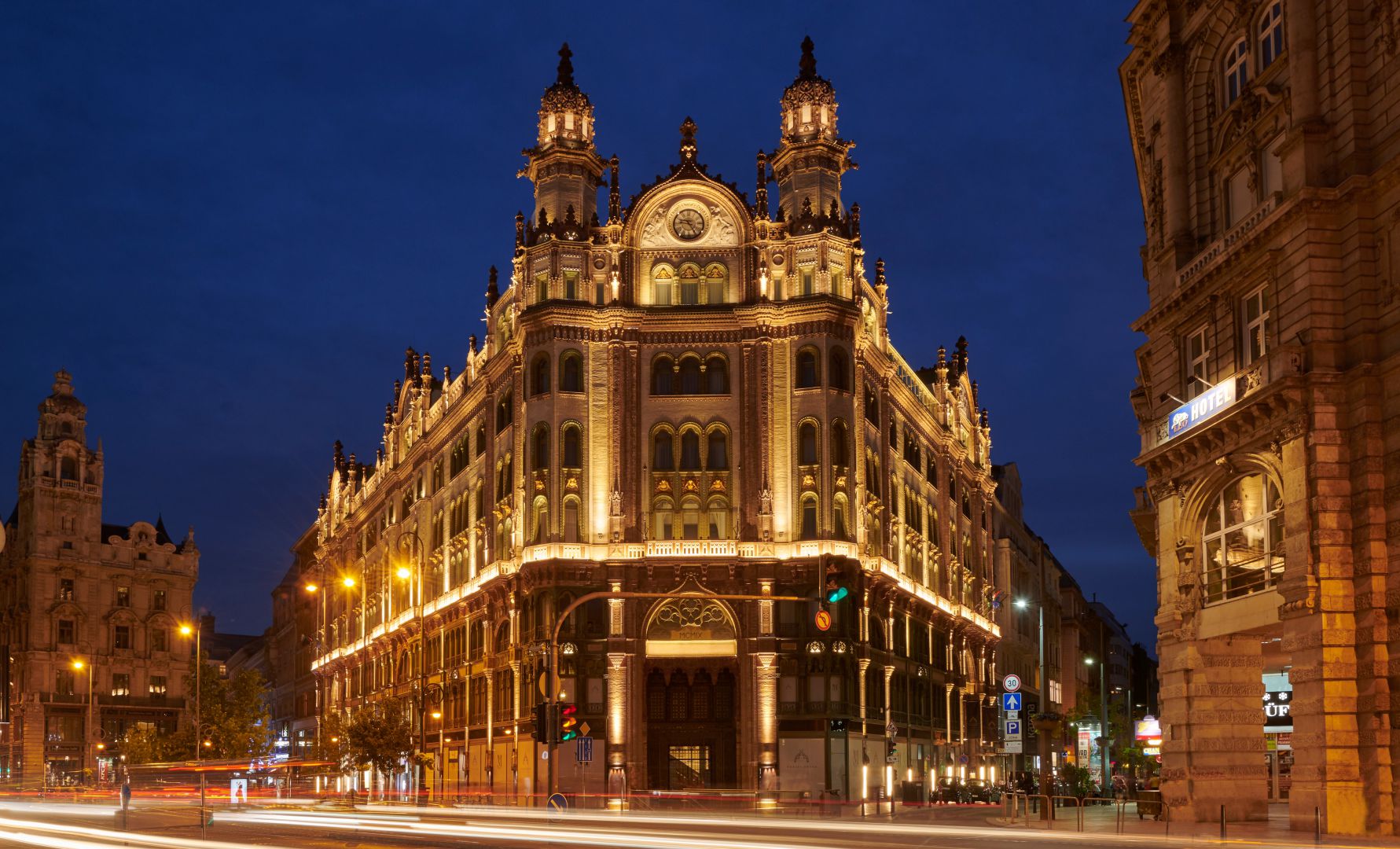
Modern experience: The historic hotel is a design marvel—just stepping inside the lobby is an experience. It’s also one of the best spots in the city for a stylish afternoon tea.
Traveler tip: Visit even if you’re not staying—coffee in the inner courtyard offers a view like nowhere else in the city.
✅ Fully operational and open to the public.
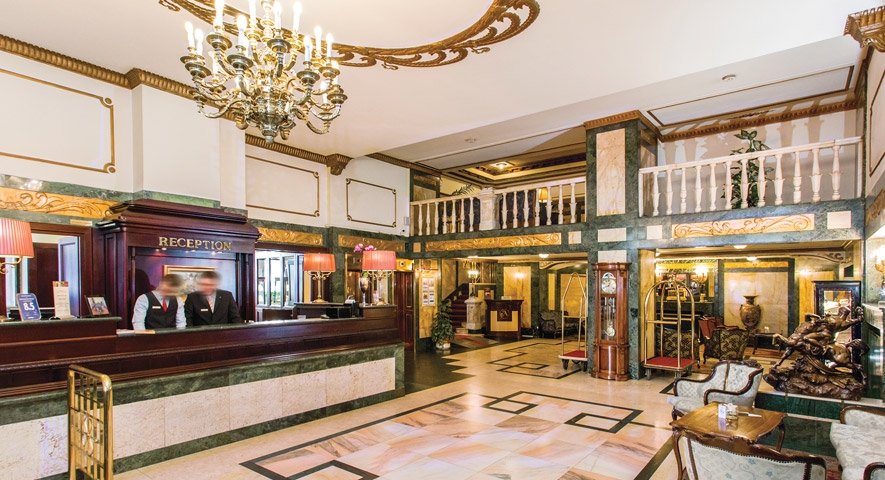
Danubius Hotel Astoria
Opened: 1914
The witness to revolution
Located at a major downtown intersection, the Astoria opened just months before WWI. Its grand interiors quickly made it a meeting point for artists and political thinkers. In October 1918, after the collapse of the Austro-Hungarian Empire, Hungary’s first democratic government briefly headquartered here.
During WWII, the hotel was seized by the Gestapo and served as a temporary base. Despite these dark chapters, the Astoria has endured, preserving its classic pre-war charm.

Modern experience: The hotel maintains its early 20th-century elegance with updated rooms. It’s also close to the Hungarian National Museum and Great Synagogue.
Traveler tip: Ask the front desk for stories from the archives—some suites still reflect the historical decor.
✅ Open and operated by Danubius Hotels.
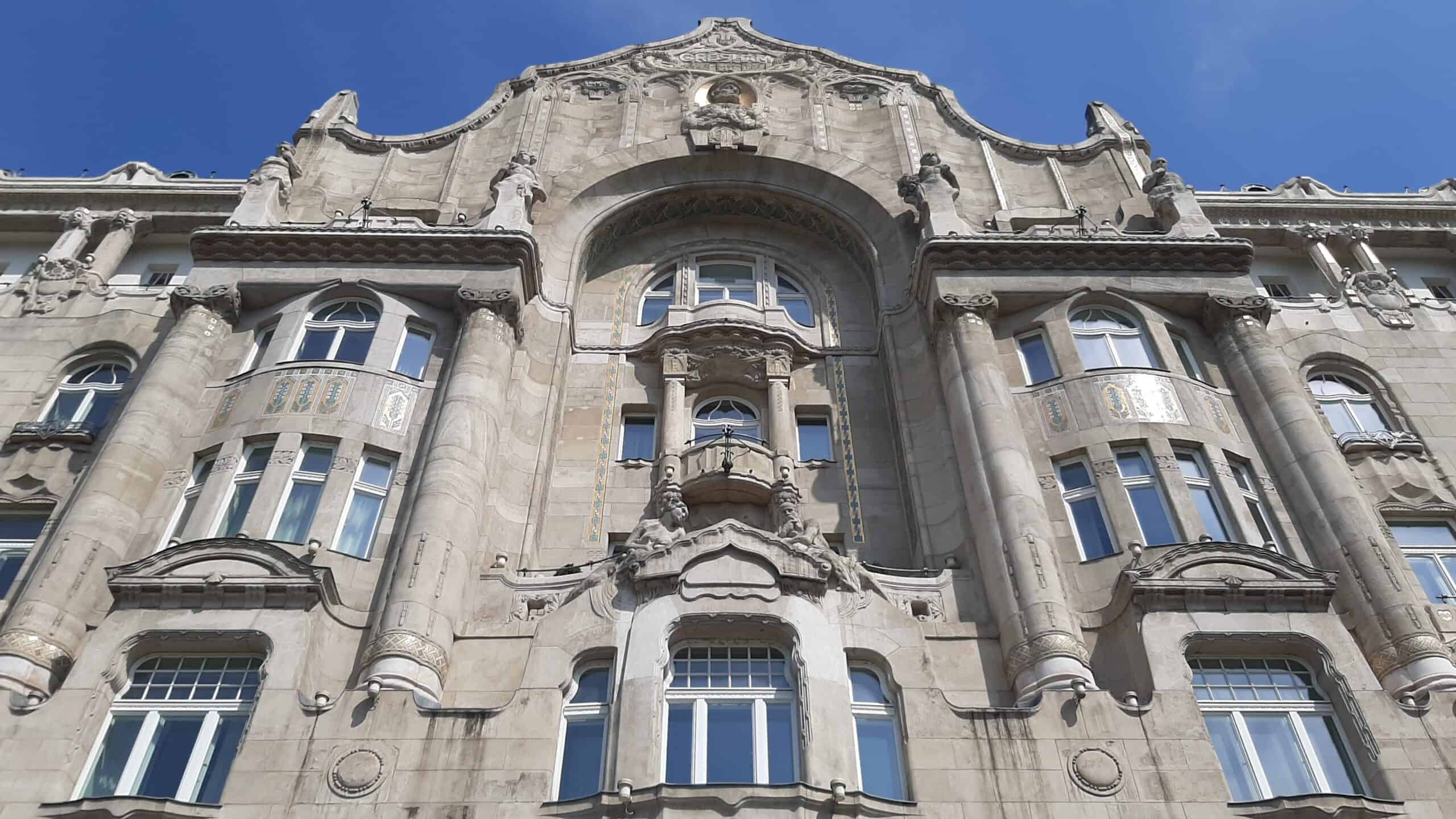
Four Seasons Hotel Gresham Palace
Originally built: 1906 | Restored and reopened: 2004
A jewel overlooking the Danube
Standing proudly at the foot of the Chain Bridge on the Pest side, in the heart of Budapest, the Four Seasons Hotel Gresham Palace Budapest is widely considered one of the most beautiful hotels not only in Budapest, but in all of Europe. Originally constructed in 1906 as the headquarters of the British Gresham Life Assurance Company, the building is a textbook example of Art Nouveau architecture—with swirling wrought iron details, stained glass, Zsolnay ceramics, and sweeping staircases.
The palace was nationalized after WWII, fell into disrepair under socialism, and was eventually restored to its full glory in the early 2000s. In 2004, it reopened as a Four Seasons hotel, carefully preserving every historic element while adding world-class amenities.
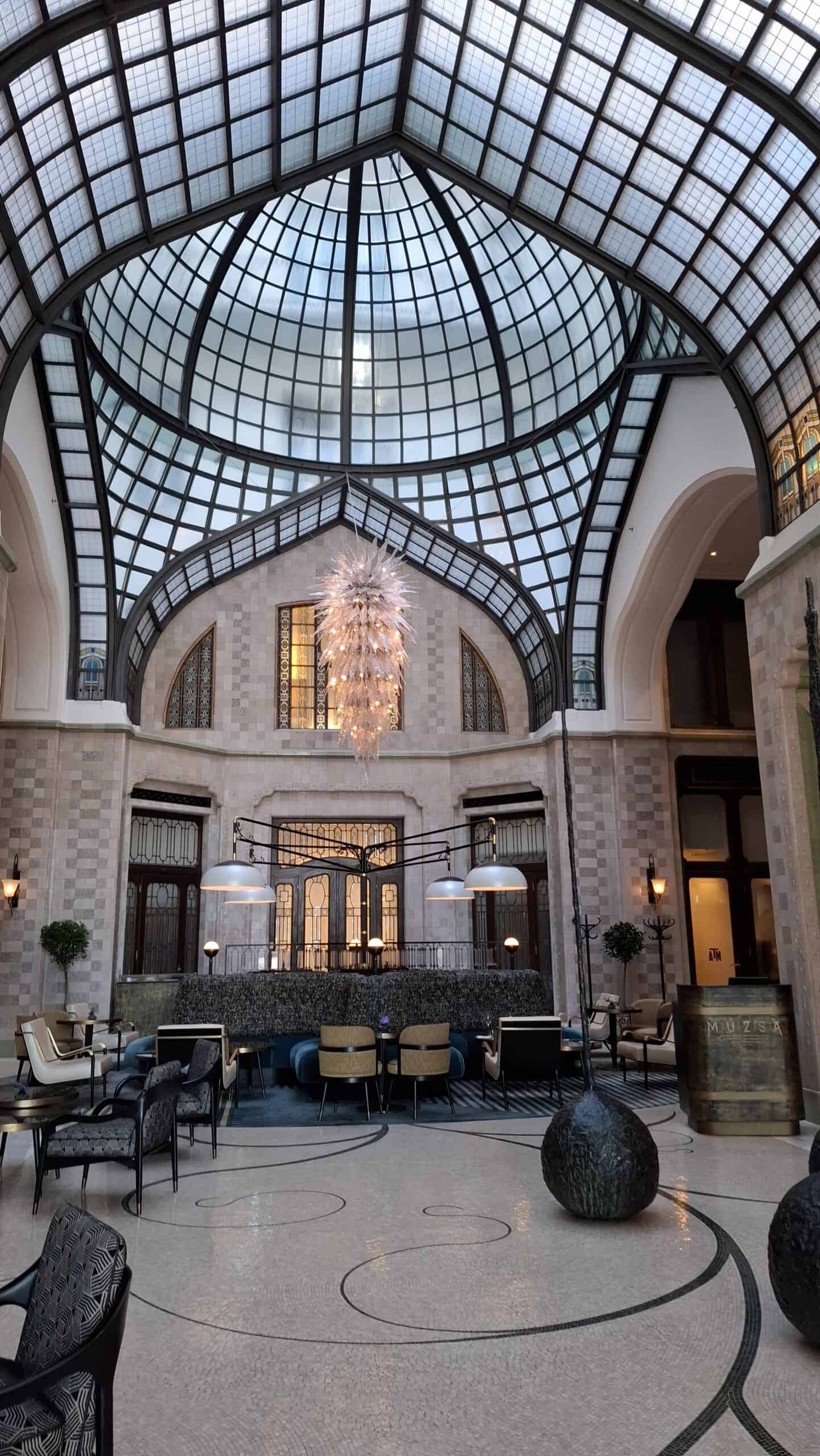
Modern experience: Guests enjoy a rare balance between historical grandeur and top-tier contemporary luxury—marble bathrooms, floor-to-ceiling windows with Danube river views, and a world-class spa.
Architectural highlights:
- The original peacock gates at the entrance
- Handmade glass mosaics in the lobby
- An atrium lounge that feels like a crystal conservatory
Traveler tip: You don’t need to be a guest to enjoy the magic—stop by for afternoon tea in the glass-roofed lobby or dinner at Kollázs, the brasserie-style restaurant that blends Hungarian and French flavors. The hotel is located perfectly in the heart of the city and offers a good starting point to discover famous landmarks like the Hungarian parliament building.
✅ Currently open and fully operational.
Quick comparison
| Historic Hotel | Year Opened | Famous For | Status |
|---|---|---|---|
| Corinthia | 1896 | First cinema in Hungary, Wes Anderson inspiration | ✅ Open |
| Hotel Gellért | 1918 | Art Nouveau baths, famous guests | ⚠️ Hotel closed for renovation; baths open until autumn 2025 |
| New York Palace | 1894 | Literary café, Belle Époque luxury | ✅ Open |
| Párisi Udvar | 1909–13 | Mosaic-filled arcade, Moorish-Art Nouveau blend | ✅ Open |
| Hotel Astoria | 1914 | 1918 revolution HQ, Gestapo occupation | ✅ Open |
| Four Seasons Gresham | 1906 (restored 2004) | Chain Bridge views, Art Nouveau palace | ✅ Open |
Which historic hotel should you choose?
- Looking for cinematic grandeur and a luxurious spa? → Corinthia Hotel Budapest offers old-world elegance and wellness in a historic setting.
- Dreaming of soaking in iconic thermal waters? → Gellért Baths are still open—even if the hotel awaits its next chapter.
- Want to sip coffee where poets once wrote? → Visit the New York Café for Belle Époque vibes and literary nostalgia.
- Craving bold architecture and boutique-style elegance? → Párisi Udvar stuns with Moorish domes and eclectic flair.
- Fascinated by political history and quiet elegance? → Hotel Astoria brings you close to the revolutionary heart of Hungary.
- Seeking unmatched luxury with breathtaking views of the Danube and Chain Bridge? → Four Seasons Gresham Palace is the ultimate in five-star refinement with a historical soul.
No matter which historic hotel you choose, we recommend booking your airport transfer in advance for a smooth and stylish arrival.
Final thoughts: don’t just visit history—stay in It
Budapest is a city where history isn’t only told—it’s lived. And there may be no better way to connect with its past than by spending the night in one of its grand hotels.
Whether you’re drawn to the opulent Four Seasons Gresham Palace, the literary legends of the New York Palace, or the cinematic halls of Corinthia, each of these historic hotels offers more than a place to sleep—they offer stories. Echoes of revolutions, whispers of emperors, and footsteps of famous guests still linger in their walls.
So next time you plan your Budapest adventure, don’t just walk through history—check into it.
Arriving in Budapest? Make your journey seamless with our private airport transfer service—comfort, reliability, and a warm welcome guaranteed.
Book your ride in advance and start your stay in style, whether you’re headed to a historic palace or a modern design hotel.
FAQ
What are some of the most famous historic hotels in Budapest?
Budapest is home to several famous historic hotels, including the Corinthia Hotel Budapest, the Gresham Palace, and the New York Palace. These hotels not only offer luxurious accommodations but also showcase stunning architecture and rich histories that reflect the city’s vibrant past.
What amenities can I expect at a historic hotel in Budapest?
Historic hotels in Budapest typically provide a range of amenities such as elegant dining options, full-service spas, fitness centers, and concierge services. Many of these hotels also feature unique architectural designs and opulent interiors, enhancing your overall experience.
Are there boutique historic hotels in Budapest?
Yes, Budapest boasts several boutique historical hotels that offer a more personalized experience. Hotels like the Mystery Hotel Budapest and Hotel Nemzeti Budapest combine modern comforts with charming historic elements, making them perfect for travelers seeking a unique stay.
How can I find the best hotel deals in Budapest?
To find the best hotel deals in Budapest, consider booking directly through the hotel’s website, using reputable travel booking sites, or checking for seasonal promotions. Additionally, traveling during the off-peak season can help you secure better rates.
What is the location advantage of staying in a historic hotel in Budapest?
Staying in a historic hotel in Budapest often places you in the heart of the city, close to major attractions such as Andrássy Avenue, the Hungarian State Opera, and the Danube River. This convenience allows for easy exploration of the city’s rich culture and history.
